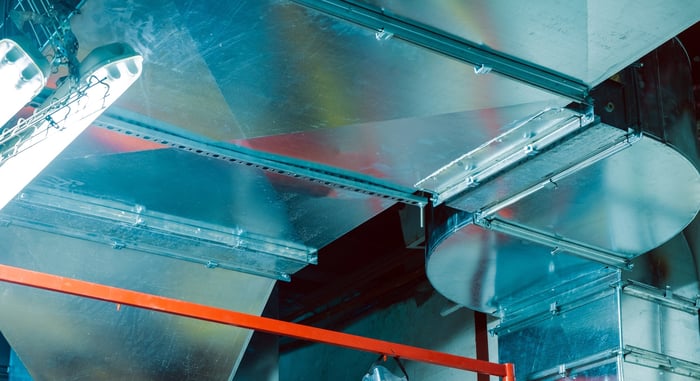Whether you’re a fabrication shop or a contractor, you're always looking for ways to improve your operations and increase profitability. Today, we'll discuss the growing trend of duct prefabrication from an overview perspective.
Prefabrication refers to the process of producing duct through a duct line and then assembling it in the shop. This involves bolting and flanging put the duct together in large sections and loading it right on semi trailers backed up to the building. And not only is duct being sectioned together, but there are conicals and taps and collars installed, and they are sealed as well.
While this may seem like a lot of handling for a process that traditionally takes place in the field, there are many reasons why prefabrication is a growing strategy being used by HVAC professionals today.
Prefabrication for HVAC Contractors
Prefabrication is a hot buzzword for HVAC contractors. In fact, prefabrication has largely become the standard in the industry. Prefabrication has a long history on the the wet side, but it’s recently started to really take effect on the dry side of HVAC, While it does require more handling, you then have less inventory to keep up with in the field, because you section it all together — one piece versus multiples. Some contractors feel like that their labor is more tenured in the shop than in the field, because field labor tends to move around more.

Overall, prefabrication creates a better deliverable in a controlled atmosphere. If you’re shipping each piece of duct work individually, either in cardboard boxes or on a truck then, you’ve got an inventory situation where you have all these parts to organize, which takes a lot of labor. A rule of thumb to put this into context is to think of field labor as equivalent to three times shop labor in terms of time and expense. The more you can assemble in your plant under controlled environment, the much less there is of trying to find these pieces and assemble them. It’s so much faster, eliminating a large portion of field connection time.
In addition to higher efficiency, prefabrication leads to a higher quality duct because the product can be tested, sealed, and leveled in a controlled environment. There are less product errors to correct in the field. Overall, some contractors would tell you that prefabrication is taking 40% of the labor out of the field.
While prefabrication represents a large change to the way general contractors run their shops, there can be these benefits and more when shops make the switch.

